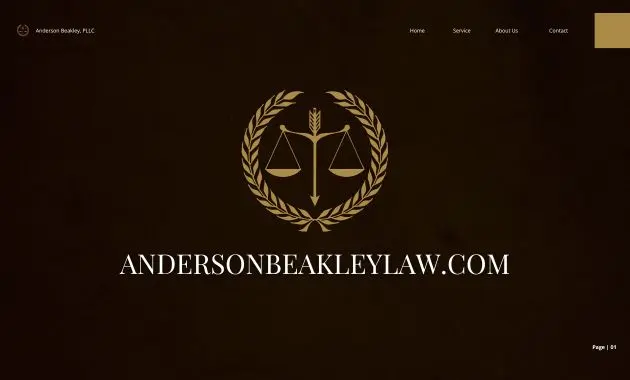Aviation intellectual property law sets the stage for this enthralling narrative, offering readers a glimpse into a story that is rich in detail and brimming with originality from the outset. The aviation industry, a global network of interconnected businesses, relies heavily on intellectual property (IP) to protect its innovations and maintain a competitive edge. From aircraft designs and engines to navigation systems and marketing materials, every aspect of the industry is touched by IP law.
This exploration delves into the unique aspects of IP law as applied to the aviation industry, examining the key types of IP – patents, trademarks, copyrights, and trade secrets – and how they are used to safeguard valuable assets. It also delves into the challenges of protecting IP in the digital age, with the rise of drones, autonomous aircraft, and artificial intelligence raising new questions about ownership and enforcement.
Introduction to Aviation Intellectual Property Law
Aviation intellectual property (IP) law is a specialized area that involves the application of traditional IP principles to the unique demands of the aerospace industry. This field is critical for protecting innovations, designs, and branding in a highly competitive and technologically advanced sector.
Also Read
Key Types of Intellectual Property in Aviation
The aviation industry relies heavily on various forms of intellectual property to safeguard its advancements. These include patents, trademarks, copyrights, and trade secrets.
- Patents: Patents protect novel inventions, such as aircraft designs, engines, and navigation systems. These grants provide exclusive rights to the patent holder, allowing them to prevent others from making, using, or selling the invention without permission. For example, Boeing’s patents on its 787 Dreamliner’s composite materials and fuel-efficient engines protect its investment in research and development.
- Trademarks: Trademarks are distinctive symbols, logos, or phrases that identify and differentiate products or services in the marketplace. They are crucial for brand recognition and consumer trust. Airlines, aircraft manufacturers, and aviation service providers heavily rely on trademarks to distinguish their offerings. For instance, the iconic “wings” logo of Southwest Airlines is a registered trademark that instantly identifies the airline to passengers worldwide.
- Copyrights: Copyrights protect original works of authorship, such as manuals, training materials, software, and design blueprints. They grant exclusive rights to the copyright holder to reproduce, distribute, and adapt the work. Aviation companies use copyrights to protect their intellectual property embedded in technical documents, software, and training materials. For instance, Airbus’s copyright on its A380 aircraft’s design blueprints prevents unauthorized copying and use of the design.
- Trade Secrets: Trade secrets are confidential information that provides a competitive edge. They can include manufacturing processes, formulas, customer lists, or marketing strategies. Aviation companies often rely on trade secrets to protect their competitive advantages. For example, a trade secret could involve a unique engine design or a proprietary fuel-saving technology.
Patents in Aviation
The aviation industry is a hotbed of innovation, constantly pushing the boundaries of what is possible in terms of aircraft design, propulsion, and navigation. Patents play a crucial role in protecting these innovations, incentivizing investment in research and development, and fostering a competitive landscape.
Patentability of Aviation Inventions
The patentability of inventions in aviation is governed by the same general principles as other fields of technology. To be patentable, an invention must be novel, non-obvious, and have a practical utility. However, the specific requirements for patentability in aviation can be complex and nuanced.
- Aircraft Designs: Aircraft designs, including the overall configuration, wing shape, fuselage design, and control surfaces, are eligible for patent protection. However, obtaining a patent for an aircraft design can be challenging, as it requires demonstrating that the design is truly novel and non-obvious. For example, a patent might be granted for a new type of wing design that improves fuel efficiency or reduces noise levels, but a patent for a simple modification to an existing wing design might not be granted.
- Engines: Aviation engines, including both piston and jet engines, are another important area of innovation in the aviation industry. Patents can be obtained for new engine designs, components, and operating principles. For example, a patent might be granted for a new type of turbofan engine that improves thrust or reduces emissions.
- Navigation Systems: Navigation systems, such as GPS, inertial navigation systems, and radar systems, are also eligible for patent protection. Patents can be obtained for new navigation algorithms, hardware designs, and system integration methods. For example, a patent might be granted for a new GPS receiver that improves accuracy or reduces signal interference.
- Materials: New materials, such as composites, alloys, and coatings, are increasingly being used in aviation. Patents can be obtained for new materials that improve the performance, durability, or weight of aircraft components. For example, a patent might be granted for a new type of composite material that is lighter and stronger than traditional materials.
Process for Obtaining a Patent
The process for obtaining a patent for an aviation invention is similar to the process for other inventions. The inventor must file a patent application with the relevant patent office, which typically includes a detailed description of the invention, drawings, and claims. The patent office will review the application to determine if it meets the patentability requirements. If the application is approved, the inventor will be granted a patent, which gives them exclusive rights to make, use, and sell the invention for a certain period of time.
Notable Patents in Aviation History, Aviation intellectual property law
Throughout aviation history, numerous patents have been granted for groundbreaking inventions that have shaped the industry. Some notable examples include:
- The Wright Brothers’ Patent for the Airplane: In 1906, the Wright brothers were granted a patent for their “flying machine,” which marked a pivotal moment in the history of aviation. This patent protected their innovative design, including the use of movable control surfaces for steering and stability.
- The Jet Engine Patent: In 1930, Frank Whittle was granted a patent for his jet engine design, which revolutionized aircraft propulsion. His invention paved the way for the development of supersonic jets and other high-performance aircraft.
- The GPS Patent: In 1973, the U.S. Navy was granted a patent for the Global Positioning System (GPS), which has become an essential navigation tool for aircraft and other vehicles. GPS has revolutionized air travel by enabling more accurate and efficient navigation.
Understanding the intricacies of aviation intellectual property law is crucial for anyone involved in this dynamic sector. Whether you’re an aircraft manufacturer, an airline, or a technology developer, navigating the legal landscape of IP is essential for success. By protecting your innovations, you can secure your competitive advantage, foster innovation, and ensure the continued growth of the aviation industry. As technology continues to advance, the role of IP law in aviation will only become more significant, shaping the future of air travel and the industries that support it.
Aviation intellectual property law protects the innovations that drive the industry, from aircraft designs to navigation systems. However, the complex nature of these innovations often raises questions about product liability, particularly when malfunctions or defects occur. For instance, if a design flaw leads to an accident, the manufacturer could face legal action for aviation product liability. Navigating this intersection of intellectual property and liability requires careful consideration of the legal landscape, ensuring that both the innovator and the user are protected.



